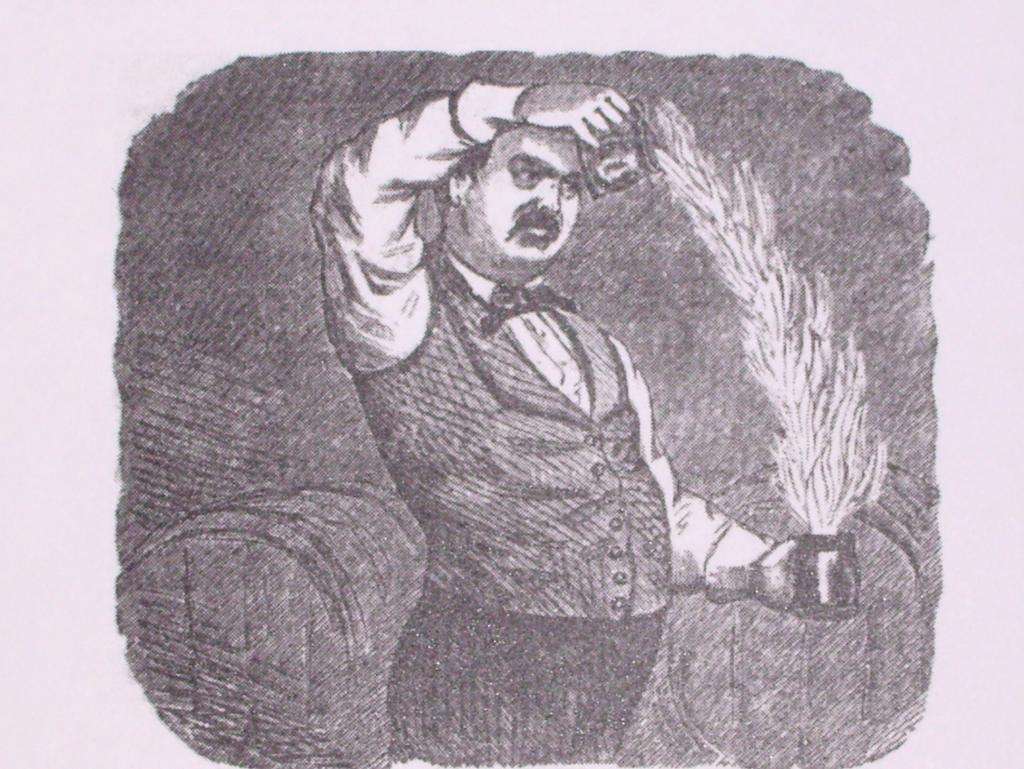Jerry Thomas: The First Bartending Superstar

Long, long before Tom Cruise was shaking up drinks in Cocktail, Jerry Thomas was making theatre behind the bar. With a status equivalent to any of today’s celebrity chefs, his death made front page news in his home of New York — and his life story continues to impress.
Born in the little town of Sackets Harbor, in upstate New York, Jerry seems to have worked in local taverns before the Gold Rush hit San Francisco, when he was still in his teens. He took ship for San Francisco, hit the shores and absconded straight away in search of gold…
A splendid, high-coloured biography of him, by the author of Gangs of New York, Herbert Asbury, picks up the story. He seems to have worked in San Francisco’s glitziest saloon-cum-brothel, the El Dorado — you can read the biography here, ideally with a pinch of salt.
Thomas seems to have been, at different times, a showman, taking a minstrel show on tour, a collector of art, a gourd collector, and a travelling bartender, working in San Francisco, New Orleans and New York, and producing the world’s first known cocktail book.
His piece de resistance, the Blue Blazer, was made by lovingly pouring a boiling mix of whisky and water, flaming, between two cups (until Thomas invented an early cocktail shaker, drinks were mixed by pouring between two cups or mugs). A snappy dresser, he favoured diamond tie pins, gold and diamond rings, and may well have been depicted by Mark Twain.
Thomas’ bartending skills and flair for self-promotion brought him to the pleasure gardens of Cremorne, in London’s Chelsea, where the arrival of the trendy American drinks were announced by leaflets dropped from a hot air balloon. A fan of prize fighting, he also managed to catch the Heenan-Sayers heavyweight match.
Back in New York, he set up his own place, home to etchings by famous artists of the day and a self-aggrandising painting showing him in the company of the stars of his time. It was also home to his own collection of gourds, and a member of the Fat Man’s Association of New York.
When he died of a heart attack, just before Christmas in 1885, the New York paper, The World, announced his passing thus: “New York’s Famous Old Bartender Dead of Apoplexy.”